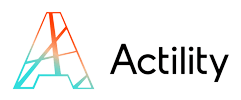

IoT is set to push the future of agriculture and farming to the next level
Maher Choufani, IoT Project Manager, Libatel

300 hectares
vineyard size

40 countries
where Château Kefraya exports

1951
year the estate was founded
Lebanon’s Ministry of Telecommunications and Ogero Telecom have been busy rolling out a nationwide IoT network, a project they aim to complete by the end of 2017.
The country recognizes the potential benefits of IoT to industry, agriculture, healthcare, urban planning, exportation, etc. Increased efficiency, competitiveness and resource management will all result from the precision and data provided by IoT connectivity and, more specifically, LoRaWAN technology.
Meanwhile, partners are already beginning to implement solutions within a variety of sectors and end-customers are seeing the results. Such efforts have coalesced at Château Kefraya, one of Lebanon’s pioneering examples of Smart Agriculture.
This 75 year-old vineyard, nestled in the West Bekaa Valley southeast of Beirut, spans 300 hectares across terraced slopes in the foothills of Mt. Barouk, a thousand meters above the Mediterranean Sea. Château Kefraya has been in the Bustro family for generations and its wine is sold in over 40 countries.
As the estate already produces excellent, renowned wines (their Comte de M 2012 vintage was highly rated by famous wine critic Robert Parker), it is reasonable to inquire why a successful enterprise would seek to introduce new technology, especially in an industry often proud of traditional methods.
For the past three years, Château Kefraya has partnered with engineers from Saint Joseph University to improve agricultural methods and better manage resources. The research team studies the terroir, the combination of climate and soil, and its effect on grape quality.
“Enhancing agricultural techniques can’t happen without agricultural research,” said Dr. Yolla Ghorra Chamoun, a professor at Saint Joseph University. “Until now, the data was collected manually—a process that is long, hard and expensive.”
Several weeks ago, Ogero and Libatel joined the team. For 40 years, Libatel has pioneered technology in both the public and private sectors with IP telephony, software development, data switching and routing, security and now the Internet of Things and Smart Solutions.
Libatel is testing IoT applications and installing sensors throughout the vineyard—even on the grapevines themselves—to help the research team gather data for the estate. Their software engineers have developed a program in parallel to receive the data sent by the sensors in the field. To transmit this data, Libatel chose LoRaWAN for its ability to provide low-power, wide-range solutions within a rapid timeframe. Actility assessed the requirements and, through the ThingPark platform, provided full support during its deployment.
The data is then visually presented through clear charts and graphs in real time on the computers and smartphones of the agricultural engineers and winemakers’ computers and smartphones. The information includes soil and water temperature, humidity, soil moisture, luminosity, etc., on six different parcels.
Recycling bins throughout Dutch cities provide clear evidence of this successful IoT implementation. A sensor placed in each bin signals to collectors when it is full. As a result, waste vehicle collection routes can be optimized to reduce cost, traffic, and pollution. The same solution is deployed in public places such as airports and train stations. The cleaners are informed when trash bins need to be emptied, improving the workload and efficiency of the cleaning staff. In both cases, IoT brings a higher quality of service and well-being for everyone.
Suez is also connecting waste collection trucks, equipped with load sensors. Treatment facilities are informed almost in real-time of the amount of trash expected from each truck. LPWA technologies ensure that even in complex city environments and at long distances in the countryside the trucks remain connected, improving their operation and streamlining the process. Optimal visibility and control of waste management are particularly critical when collecting hazardous waste: knowing exactly how much waste has been collected is a key tool in optimizing the treatment phase. For companies dealing with industrial waste, Suez’ IoT innovations help improve collection and especially guarantees traceability throughout the disposal chain.
Some cities are encouraging their homeowners to sort their waste by installing smart bins in individual homes. These bins weigh the amount of litter received, allowing for per usage consumer billing. This incentive-based program encourages everyone to be proactive and responsible in their personal behaviors.
Suez is proud to lead the waste management revolution to make it more:
“Now, by placing sensors in the field,” reports Dr. Chamoun, “(we) automatically collect data to achieve results that are faster, clearer and better.”
Maher Choufani, IoT Project Manager at Libatel, has also been impressed by the speed and effectiveness in which the various parties worked together to implement a full LoRaWAN Iot solution from scratch. Within two months, they successfully collaborated with a major telecom operator, university research team, various IoT solutions providers and the wine estate itself to deploy the sensors, connect them through gateways to the platform and onward to users’ online dashboards.
“I was surprised by how much IoT—especially LoRaWAN—helped the viticultural engineers improve wine quality, and therefore wine production,” Choufani said. “IoT is set to push the future of agriculture and farming to the next level.”
While Libatel touts the evolution toward what they describe as “precision viticulture”, the country of Lebanon itself has further evidence that IoT can increase productivity and efficiency to boost the country’s exports and achieve its larger economic goals.
© 2024 Actility’s All Rights Reserved